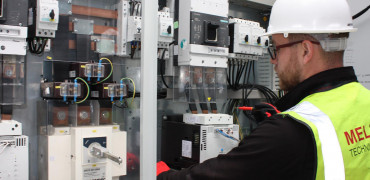At the end of 2020, the Climate Change Committee (CCC) published its Sixth Carbon Budget. The report provides the UK government with recommendations and advice on where it should be setting its sights to get the UK to Net Zero Carbon by 2050.
The CCC’s report includes a review of the UK’s use of fluorinated gases, known as F gases. These are potentially damaging if allowed to leak into the environment, as they can build up and trap heat in the earth’s atmosphere.
F gases are categorised according to their global warming potential (GWP). Of all the F gases, HFCs are the main culprit when it comes to impacting the climate – they have GWPs ranging from 100 to around 15,000.
System designers and installers need to be aware of the UK’s F Gas regulations
Ongoing commitment
Fluorinated gases are of course widely used in air conditioning systems.
In fact, according to the CCC, the largest source of the UK’s F gas emissions is the “refrigeration, air conditioning and heat pump (RACHP) sector”.
Emissions are caused largely by leakage from appliances during use and when they are disposed of.
The European Union introduced the F Gas Regulation in 2014 to cut the use of high GWP gases and, even though the UK has now left the EU, we still have a commitment to cut our use of these gases.
Ongoing reductions
UK regulation sets a cap on the amount of HFCs that producers and importers can place on the UK market. This limit will be reduced every three years, until 2030 when it will reach a cumulative 79% cut against 2015 levels of HFCs on the market.
The UK regulation also includes requirements for mandatory leak checks and maintenance regimes.
The UK air conditioning market has already seen a shift away from refrigerants with a high GWP as these have been removed from the market.
For example, R22, with a GWP of around 1,800, was phased out completely in 2015.
One of the effects of F gas regulation is that as a refrigerant reaches phase-down point, there can be significant price rises – making systems more expensive to maintain.
Shrinking carbon footprints
Another important driver for reducing HFC use is the growing number of corporate clients making very public commitments to shrinking their carbon footprint.
As a result, the use of F gases anywhere in their organisations (including air conditioning or heat pumps) is something they are taking seriously.
As clients, consultants and contractors look for solutions in a market with shifting refrigerant requirements, Mitsubishi Electric is working to ensure our products offer the benefits of low GWP refrigerants alongside robust and energy efficient operation.
For example, we offer VRF systems that use R32 refrigerant with a GWP of 675.
And our Hyrbid VRF has been designed to reduce the amount of R32 in the system, by using water as the medium for delivering cooling or heating around an occupied space.
Non-HFC refrigerants
It’s important to bear in mind that as refrigerants change, the systems that use them also must be manufactured to suit the characteristics of these new chemicals and to enable them to be used safely by installers.
For example, Mitsubishi Electric is already making use of non-HFC refrigerants such as hydrofluoro-olefins (HFOs). These include R1234Ze (with a GWP of 7) and R1234yf (GWP 4).
Mitsubishi Electric’s Climaveneta brand chillers use R1234ze refrigerant and have been designed to operate optimally based on the characteristics of this refrigerant.
Low GWP heating
For clients looking at renewable technologies such as heat pumps for their heating and hot water requirements, we have also taken a fresh look at the refrigerants we use.
Mitsubishi Electric’s recently-launched Ecodan QAHV heat pump uses CO2 (with a GWP of 1) as its refrigerant.
The QAHV produces hot water up to 90oC and is already proving popular with clients looking to make a significant sustainable step change in their HVAC systems.
Future-proof
As the UK continues its Net Zero Carbon commitment, designers and installers need to be aware of the UK’s F Gas regulations.
By shifting to low GWP refrigerant systems now, end-users can be assured that they are not left with systems that will become expensive (or even impossible) to maintain in a few years.
Low-GWP cooling and heating technology on the market today offers robust performance, energy efficiency and a long-term sustainable solution.
Dave Archer is National M&E Manager



